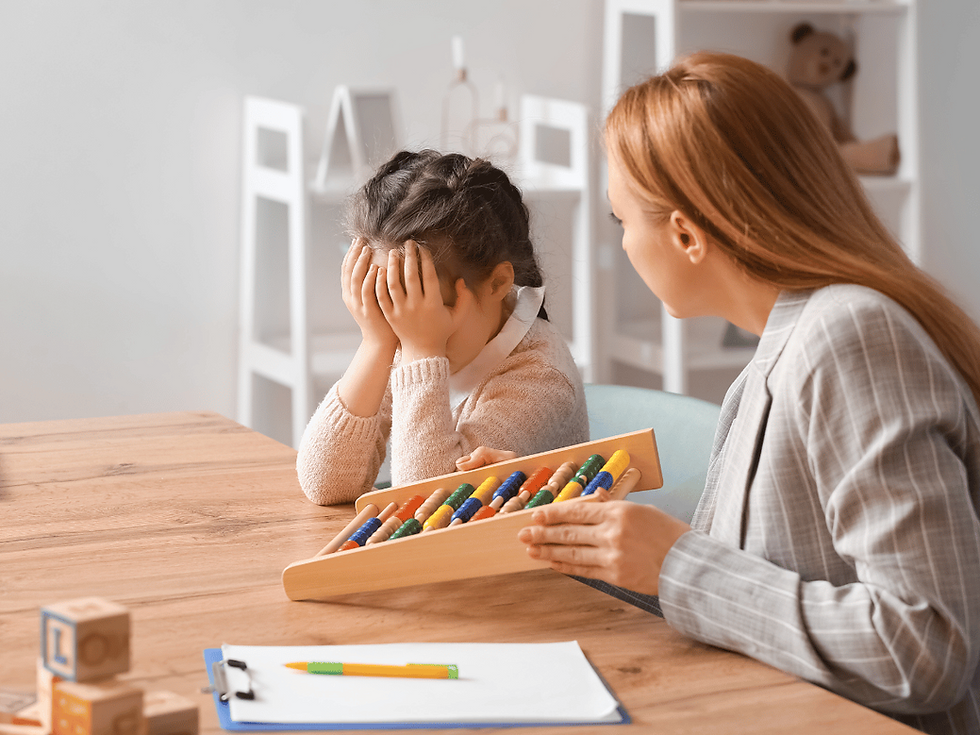Unraveling the Truth: Speech Delay in Bilingual Children - Debunking Myths and Embracing Realities
- Ritu Jain

- Oct 6, 2023
- 2 min read
Navigating the realm of speech development in bilingual children can be a labyrinth of myths and realities. As parents and caregivers, understanding the nuances of language acquisition is crucial. In this blog, we'll debunk prevalent myths surrounding speech delay in bilingual kids and shed light on the constructive realities that every concerned guardian should embrace.

Myth 1 Bilingualism Causes Speech Delay: One pervasive myth is that exposing children to multiple languages simultaneously hinders their speech development. On the contrary, research consistently shows that bilingualism does not cause speech delay. In fact, it enriches cognitive abilities and can result in a more advanced linguistic skill set. It's essential to recognize that variations in language acquisition milestones exist, and bilingual children might achieve certain milestones at different rates.
Reality 1 Normal Variations in Speech Development: Speech development varies among all children, regardless of whether they are monolingual or bilingual. Some kids may start talking earlier, while others take a bit more time. This normal variation is influenced by factors such as exposure, individual differences, and environmental stimuli. Celebrating these differences and providing a supportive environment is key to nurturing a bilingual child's language skills.
Myth 2 Mixing Languages Causes Confusion: Another misconception is that exposing children to two languages simultaneously results in linguistic confusion. However, research suggests that bilingual children are adept at distinguishing and using each language appropriately. Mixing languages, known as "code-switching," is a natural and normal part of bilingual language development. It reflects their linguistic flexibility rather than confusion.
Reality 2 Code-Switching as Linguistic Proficiency: Code-switching is a sign of linguistic proficiency, not confusion. Bilingual children often seamlessly navigate between languages based on context and audience. This ability showcases their linguistic awareness and cognitive flexibility. Embracing code-switching encourages a positive attitude towards both languages and fosters a strong foundation for bilingual communication.
Myth 3 Delayed Speech Requires Intervention: A common misconception is that any delay in speech warrants immediate intervention. However, it's crucial to differentiate between typical language development variations and true speech disorders. Bilingual children might exhibit a delay in specific language milestones, but this doesn't necessarily indicate a problem. Patience, consistent exposure to both languages, and a language-rich environment often resolve these delays naturally.
Reality 3 Monitoring Progress and Seeking Support: While some delays are part of the normal spectrum, consistent monitoring of a bilingual child's speech development is essential. If concerns persist, seeking advice from a speech-language pathologist can provide valuable insights. Early intervention, if needed, can address any potential issues and support the child's overall language development.
Conclusion:
Debunking myths surrounding speech delay in bilingual children is imperative for fostering a supportive linguistic environment. Embracing the constructive realities of bilingualism allows parents and caregivers to navigate the intricacies of language development with confidence. Remember, each child is unique, and understanding the normal variations in speech milestones is key to nurturing a bilingual child's linguistic journey.









Comments